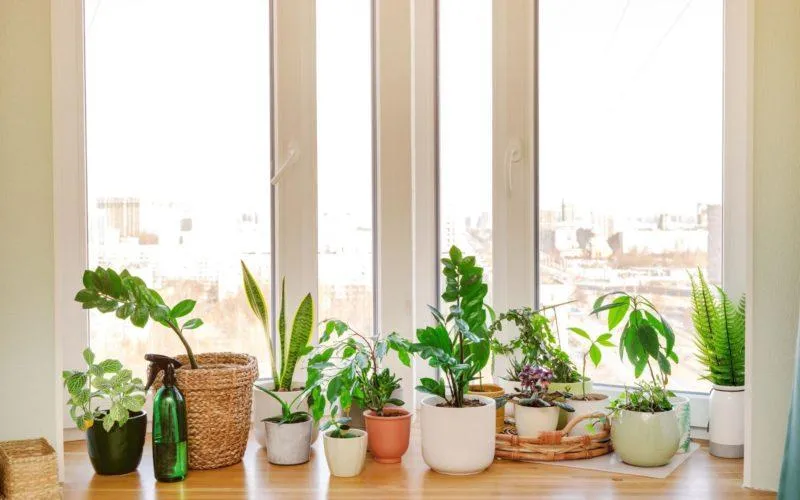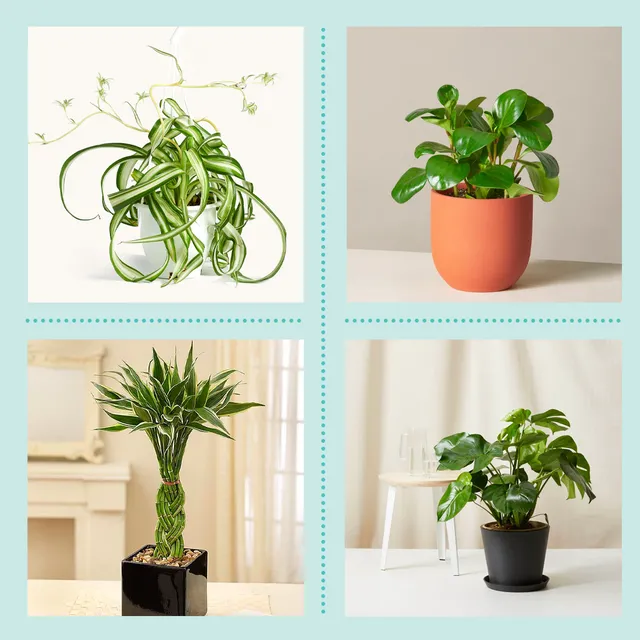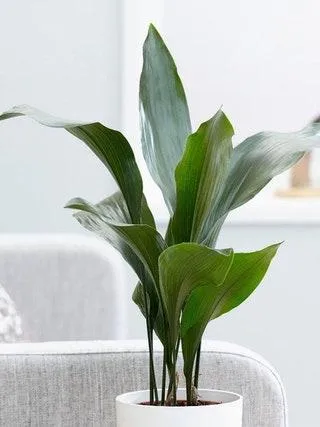The Truth About Indoor Plants and Sunlight
Have you ever wondered if your indoor plants really need sunlight to survive? Many people think plants can’t thrive without direct sun, but the reality is more complex than that. In this article, I’ll explain the different lighting needs of common houseplants and bust some myths about keeping plants in the dark.
Do All Plants Need Sunlight?
The short answer is no – not all plants require direct sun to grow happily indoors. While photosynthesis does need light energy to power plant growth, the amount and type of light can vary greatly between species. From my experience as an avid gardener, many so-called “low light” plants are perfectly capable of living in shaded spots or even without any direct sun at all.
- Plants evolved in diverse natural habitats – from deep forests to sunny meadows.
- Just as plants have adapted to different ecoysystems outdoors, varieties exist for low-light indoor conditions too.
- Houseplants labeled “shade tolerant” or “low light” usually do fine in indirect natural light or even artificial light.
The trick is choosing plants suited to your lighting conditions rather than expecting a “full sun” plant to thrive in the dark! Next, let’s look at some popular indoor varieties and their actual light needs.
Low Light Houseplants That Don’t Need Direct Sun
Here are a few common plants commonly believed to require sunlight that can actually grow perfectly well without it:
Pothos: Known by many names like Devil’s Ivy or Silver Vine, Pothos is arguably the easiest plant to keep. I’ve had mine growing for years just sitting on my north-facing desk without a single sunny spot. They are pros at photosynthesis with limited light.
Philodendron: With their elegant pink or green heart-shaped leaves, Philodendrons add bright style to any space. Though they grow faster with sunlight, they will even climb up walls in the dark without complaints.

Snake Plant: These upright green swords are practically indestructible. With their ability to store water, Snake Plants soldier on while barely needing a drink. Let alone sunlight – mine has lived for a decade in complete darkness!
Chinese Evergreen: Featuring colorful foliage in green, pink or white stripes, Chinese Evergreen tolerates low light well. Although new leaves may be paler, these beauties stay beautiful with barely any direct sun exposure.
Peace Lily: Known for their dramatic white blooms, Peace Lilies thrive on neglect. Place them anywhere, even under furniture, and this plant will purify the air without complaint.
Spider Plant: Producing tiny spiderlets on long tendrils, these guys add whimsy to any room. Despite their creeping name, Spider Plants prefer low to moderate light and can survive for years with just diffuse window glow.
As you can see from these examples, declaring “all plants need sun” just isn’t true. With the right varieties, you can keep alive and thriving indoor greenery anywhere – even in complete darkness! The key is choosing adapted species and providing the suitable conditions.
Myth Busting: Can Plants Really Live Without Any Light?
Now let’s debunk a common myth: the idea that plants can’t survive at all without any light exposure whatsoever. While direct sunlight isn’t necessary, is it really possible for greenery to live in total darkness? Well, here’s the real low-down from my personal experience growing plants…

From a biological perspective, plant cells do require at least a small amount of light for photosynthesis to occur over the long term. But horticultural science has also found some species can persist for surprisingly long stretches without any light access whatsoever!
In reality, plants have evolved various survival strategies for difficult conditions. For example, some plants like Snake Plant store carbohydrates in their leaves and stems, and can then rely on these energy reserves for a while without light. Others like Pothos and Ivy can shift more towards respirating like animals temporarily when photosynthesis isn’t possible.
I’ve kept pots of Pothos, Philodendron and Spider Plant clipped under kitchen cabinets out of direct light for months at a time by forgetting to move them. Despite being in the dark the whole time, they remained tinged with green and even put out new growth once relocated to brighter areas later!
So while no light is not optimal, the reality is some adaptable houseplants can absolutely live on stored energy reserves or through alternative metabolic pathways for relatively long periods in total darkness if needed before dying off.
It wasn’t exactly amazing plant husbandry skills on my part – more like testing the claims of their supposed low light needs by total accident! But my personal finding confirms that under the right conditions, some common indoor plants can persist for months without seeing the light of day. Preserving green greenery is possible even in the dark.
Everything In Moderation – Finding the Right Balance for Your Plants
In the end, getting the perfect lighting conditions for plants takes a bit of trial and error. From what I’ve seen, the key is moderation – while full sun may scorch, no light at all after long periods may prove deadly too. Most houseplants thrive best with moderate, diffused natural light coming through a window for several hours daily.

If that’s not possible, well-distributed artificial grow lights can simulate the sun well. But even without any direct light access, many varieties muddle along if given their preferences. And plants constantly shift and adapt to available resources.
So in conclusion – don’t yank your hair out worrying if little Ms. Pothos isn’t basking in beams of sun each day! With the appropriate species and care, it’s very possible to keep happy, healthy houseplants indoors without direct light. Just follow their natural habitats and needs as a guide for the right balance. With the thriving varieties, light is optional rather than obligatory!
Indoor Plants that Thrive Without Direct Sunlight
| Plant | Light Needs | Care Tips |
|---|---|---|
| Snake plant | Low light | Water when top inch of soil is dry. Tolerates neglect. |
| Pothos | Low to bright indirect light | Water when top inch of soil is dry. Prune or train vines. |
| Chinese evergreen | Low to medium indirect light | Water when top inch of soil is dry. Prune periodically. |
| Peace lily | Low to bright indirect light | Water when soil is dry. Likes high humidity. |
| ZZ plant | Very low light | Water infrequently. Tolerates low humidity and neglect. |
FAQ
-
Why do indoor plants not need as much sunlight as outdoor plants?
Indoor plants basically don’t need as much light as plants outside since they are inside places where it’s darker. The light levels in homes and offices are way lower than what plants experience outside in nature. Even strong artificial lighting can’t come close to natural sunlight. So indoor plants have adapted to make do with less light.
-
Do indoor plants need any sunlight at all?
While indoor plants can survive with less light than outdoors, they still need some amount of sunlight to perform photosynthesis. Kinda like how humans can live with less food but still require nutrition. Most indoor plants will do okay near a south-facing window that gets several hours of indirect sunlight every day. Going weeks without any light will cause them to become leggy and unhealthy looking over time.
-
What happens if indoor plants don’t get enough light?
Without sufficient light, indoor plants may start to look rather ugly. They are likely to become elongated and lanky trying to reach for more sun. The leaves may become smaller and sparser. Additionally, the plant may stop blooming or producing new growth. Basically, it’s not going to live up to its full potential without moderate light. However, it can survive for a while like this before declining.
-
Can indoor plants get too much light?
While most houseplants prefer low-to-medium indoor lighting, a few varieties can actually handle quite a lot of sun. Cacti and succulents are notorious sunlight hogs. Still,Even they can potentially get sunburned if stuck in direct strong light for hours on end, like on a windowsill facing south. Too much intense light may cause leaf browning or scorching. Perhaps aim for morning sun and turn plants occasionally to prevent overexposure.

-
Which indoor plants need the least amount of light?
Some of the indoor plant varieties that can tolerate very low light conditions include pothos, spider plant, peace lily, philodendron and Chinese evergreen. These guys can live in quite dim rooms as long as they receive a little brightness from somewhere. Snake plants and zz plants are also legendary for surviving weeks without any direct sunshine. However, who knows – even they may get kind of bored or sad without some light stimulation now and then.
-
Can indoor plants survive totally in the dark?
While certain houseplants thrive in shade, the truth is that no plant can live for an extended period without any light at all. Even under-lit plants need a small amount of light each day to photosynthesis and produce the carbohydrates and nutrients required for survival. Leaving indoor plants in the dark for weeks would pretty much guarantee they get awfully unhealthy and may perish. Some plants keep going for a surprisingly long time diminished lighting. But total darkness is still a non-starter for plant well-being in the long term.
-
When should grow lights be used for indoor plants?
If you have indoor plants situated in very dim rooms with no direct sunlight, supplemental grow lights may be a sound investment. Some potential signs that your plants might benefit from additional artificial lighting include elongated leggy growth, sparse twisted leaves, and lack of blooming. Grow lights could be busted out to aid plants that just aren’t thriving in current conditions. But unless the room is quite poorly lit to begin with, most houseplants will do fine without special lights.
